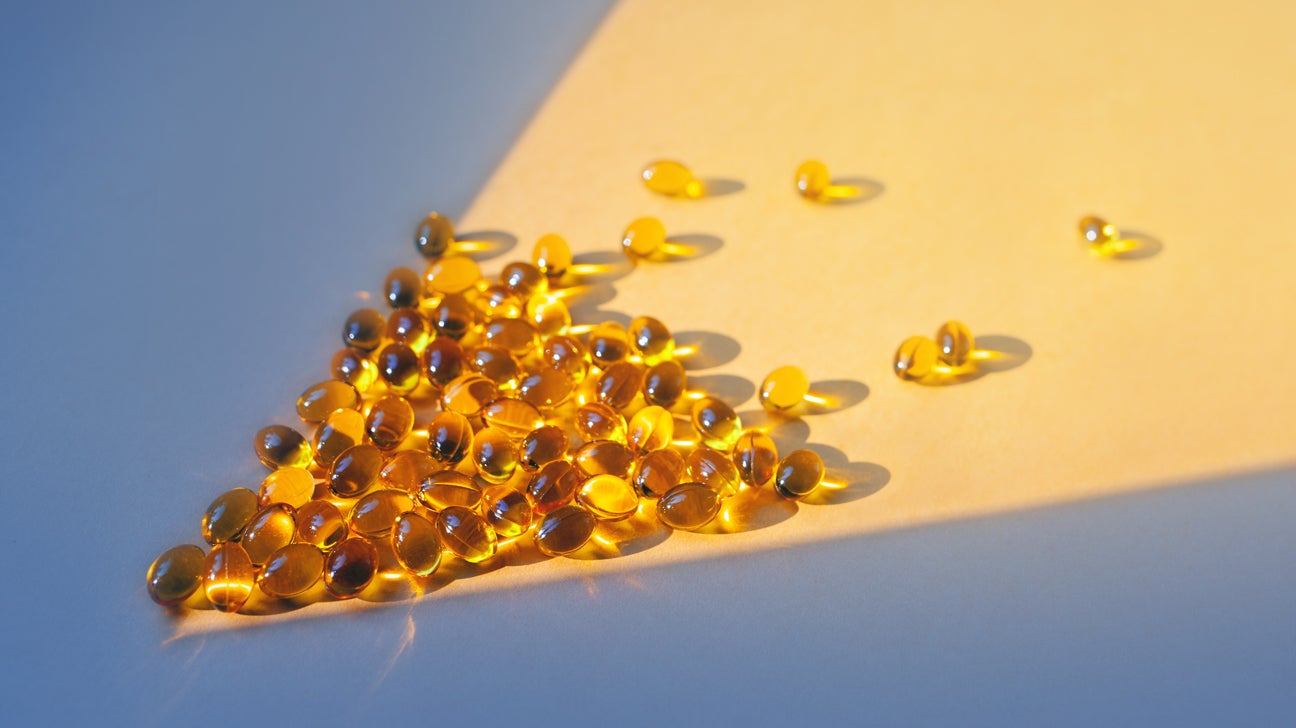Omega-3s are fatty acids that support the health of many important functions in your body, including your immune system, organs, and hormones. While full-blown omega-3 deficiency is rare in otherwise healthy Americans, you might not be getting as much of these fats as your body needs to be at its best.
Here’s how to tell if you’re getting enough omega-3s in your diet and how to get more if you need them.
What are the symptoms of omega-3 deficiency?
While a true omega-3 deficiency is very rare, some of the signs that you aren’t getting enough omega-3s in your diet are:
- skin issues like rough skin, dermatitis, and lesions
- a weakened immune system
- increased inflammation
- impaired vision
- mood disorders like depression and anxiety

Do you have omega-3 deficiency?
Because omega-3 fats are so important to the way your body functions, not getting enough may lead to negative health outcomes.
How many omega-3s do you need?
The United States doesn’t provide specific recommendations yet, but European health experts recommend getting between 250 and 500 milligrams of combined EPA and DHA per day. Research suggests most Americans don’t come close to meeting those numbers, getting only about 90 milligrams per day.
Although omega-3 deficiency is rare, omega-3 insufficiency is pretty common in the United States.
That’s because Western diets tend to include a lot of processed foods and not enough foods that contain omega-3 fats, like cold-water fish.
Low omega-3 intake could lead to:
- increased risk of heart disease
- increased risk of mood disorders like depression and anxiety
- skin issues like rough skin, dermatitis, and lesions
- a weakened immune system
- increased risk of neurodegenerative conditions
- increased inflammation
- infertility
- kidney issues
- impaired vision
If you have any symptoms of omega-3 deficiency, talk with a medical professional.
Who’s most at risk?
Many people in the United States don’t consume enough DHA and EPA. Research suggests that certain groups are more at risk, including:
- women
- teens
- children
- people who follow very low fat diets
- people who follow vegan diets
- people with certain medical conditions, such as liver disease and cystic fibrosis
What exactly are omega-3s?
Omega-3s are three types of fatty acids that help your body do important jobs like reduce inflammation. They can even support vision and heart health.
The first is alpha-linolenic acid (ALA).
- You have to get ALA from certain plant foods like flaxseed, soybeans, and chia seeds.
- Your body can convert it to the other two types of omega-3s (listed below) in order to get usable energy from it, but this may not be the most efficient way to get those two types.
- It’s considered an essential fatty acid because your body can’t make it.
The other two types are docosahexaenoic acid (DHA) and eicosapentaenoic acid (EPA).
- Your body can make them from ALA (but very inefficiently).
- You can get them from certain foods, including seafood and algae.
- Your body can use them as they are.
- They’re still considered essential, or conditionally essential because of the limited conversion rate of ALA.
- They’re critical for processes like fetal growth and development and brain function and are an important part of cellular membranes.
How to get more omega-3s
If you want to increase your omega-3 intake, you can either concentrate on eating more omega-3-rich foods or consider taking an omega-3 supplement.
Seafood is by far the best source of EPA and DHA. Fish like herring, sardines, salmon, and trout are packed with these fats. Oysters, clams, and mussels are also good options. Feeling fancy? Caviar is another great source.
The National Institutes of Health recommends that adults consume 8 ounces of seafood per week (or up to 12 ounces of low mercury seafood for those who are pregnant or breastfeeding).
Other animal products, like meat, eggs, and dairy products from pasture-raised animals, contain some EPA and DHA but not a lot. Some foods, like eggs, are typically fortified with DHA.
ALA is found in plant foods like chia seeds, flaxseed, walnuts, soybeans, and canola oil. But remember: The amount of ALA converted into EPA and DHA is very small, so you can’t rely on eating ALA alone.
PSA on EPA and DHA
Because the conversion rate of ALA to EPA and DHA is so low, the most effective way to increase your blood levels of DHA and EPA is to eat foods rich in these fats, like cold-water fish, or to take a supplement.
Plus, studies suggest that diets high in DHA and EPA are linked to improvements in heart health and brain function, as well as many other benefits.
How to get omega-3s without eating fish
Fish oil, cod liver oil, and krill oil supplements are excellent sources of EPA and DHA.
A typical EPA/DHA supplement provides about 180 milligrams of EPA and 120 milligrams of DHA per serving.
Consult a healthcare professional before taking any omega-3 supplements, as they can interact with other medications and may not be recommended for people with certain conditions.
If you’re looking for a plant-based option, algal oil may be a great choice. One study suggests algal oil is a solid substitute for fish oil when you’re trying to get more DHA.
The bottom line
Omega-3s are important for overall health. True deficiencies are extremely rare, but most people still don’t get enough of these “good” fats.
Fortunately, there are ways to increase your dietary intake of omega-3s, including eating more omega-3-rich foods like cold-water fish, algae, and fortified foods or taking an omega-3 supplement.

0 Commentaires